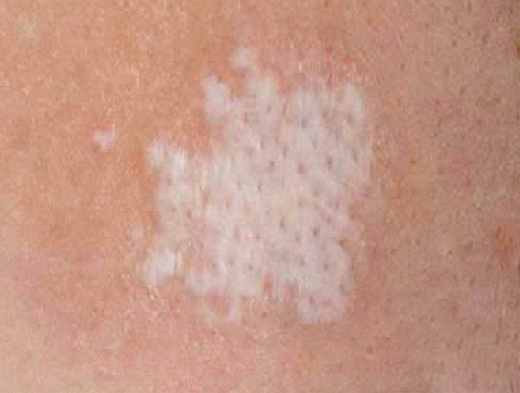Lichen Sclerosus Symptoms, Causes, Diagnosis and Treatment

What Is Lichen Sclerosus?
When women go though their menopause, some are likely to suffer from lichen sclerosus. It is a skin condition leading to thin white and shiny spots that tend to tear easily and may eventually result in bleeding. Lichen sclerosus is not contagious and is more largely reported in women. Although it can affect any area of the body but it is more common on the skin of vulva, around the anus or at the end of the penis. Very often, lichen sclerosus gets cured by itself but it is better to consult a doctor before complications arise.
What Are The Symptoms Of Lichen Sclerosus?
In some cases, symptoms do not evolve at all. However, people must look for the following symptoms to identify lichen sclerosus:
- Bleeding and blistering in severe cases.
- Pain during intercourse, depending on the location of lichen sclerosus.
- Tearing of skin.
- Severe itching.
- Smooth white spots turning into patches.
- If parts around anal or genital areas are affected, it may lead to discomfort.
If no symptoms show up, it might be safe not getting it treated immediately but if the symptoms start to evolve, victims must consult a doctor. This is because complications may arise and make things worse.
What Causes Lichen Sclerosus?
No theory or study has yet been able to prove the actual reason of why lichen sclerosus occurs but there are three commonly known reasons:
- Over activity of the immune system causing inflammation.
- Problems with hormones.
- Previous injury that damaged the skin or produced scars.
Inheritance of lichen sclerosus is another reason suggested by experts.
What Factors Elevates The Risk Of Lichen Sclerosus?
People with the following characteristics tend to suffer from lichen sclerosus more than other:
- Post-menopausal women.
- Previously developed scars due to injuries.
- Family history.
What Are The Possible Complications Of Lichen Sclerosus?
The first major complication that might arise, though very rarely, is skin cancer. If lichen sclerosus appears again and again on one area, then the possibility of skin cancer gets high. Secondly, severe pain during sexual intercourse is a complication since the vaginal opening gets narrower due to scars. In men, however, the thinning of the foreskin could lead to pain during erection and/or urinating.
How Is Lichen Sclerosus Diagnosed?
Doctors usually use two methods to diagnose lichen sclerosus accurately:
- Physical examination.
- Skin biopsy and observation under a microscope.
When the doctors get information about the evolving symptoms, they diagnose lichen sclerosus easily with the help of these two methods.
How Is Lichen Sclerosus Treated?
In the early stages, lichen sclerosus might not require any treatment if the symptoms do not show up. However, the following treatment methods are likely to be adapted by medical centers:
- Corticosteroids treatment is the most popular one and the remaining are used if lichen sclerosus is not cured through this method.
- Medications that modulate immunity.
- Treatment with ultraviolet (UV) light.
- Removal of foreskin (for male victims)
Related Articles :
Mastitis Symptoms, Causes, Diagnosis and Treatment
Syphilis Symptoms, Causes, Diagnosis and Treatment
Rosacea Symptoms, Causes, Diagnosis and Treatment
Perioral Dermatitis Symptoms, Causes, Diagnosis and Treatment
Dermatitis Herpetiformis Symptoms, Causes, Diagnosis and Treatment
Chancroid Symptoms, Causes, Diagnosis and Treatment
Bullous Pemphigoid Symptoms, Causes, Diagnosis and Treatment
Mammary Duct Ectasia Symptoms, Causes, Diagnosis and Treatment
Lupus Symptoms, Causes, Diagnosis and Treatment
Lichen Nitidus Symptoms, Causes, Diagnosis and Treatment
Leprosy Symptoms, Causes, Diagnosis and Treatment
Latex Allergy Symptoms, Causes, Diagnosis and Treatment
Jock Itch Symptoms, Causes, Diagnosis and Treatment
Ringworm Symptoms, Causes, Diagnosis and Treatment
Roseola Symptoms, Causes, Diagnosis and Treatment
By : Natural Health News




